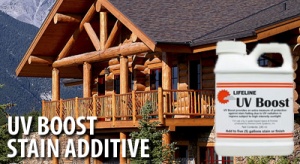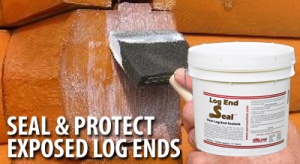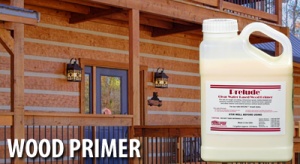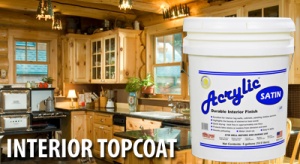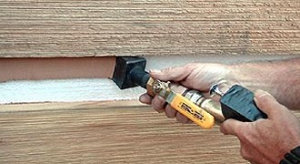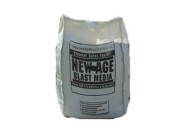 Perma-Chink Systems, Inc
Log & Timber Home Care Experts
Perma-Chink Systems, Inc
Log & Timber Home Care Experts
Michael
Borate Rods Against Wood Decay
Cobra™ Rods are a way to spot treat decay prone areas such as log ends that are already coated with a finish.
Once inserted into damp or wet wood, a borate and copper complex in Cobra Rods dissolves and then spreads the active ingredients to the area surrounding the rod. This eliminates active decay fungi and helps prevent rot for 8 to 10 years.
Cobra Rods are 7/16" in diameter and are two inches in length. A 1/2" diameter drill bit is used for installation. The installation holes may be plugged with the accompanying plastic plugs or Energy Seal.
A typical six to eight inch round log end will require two 2” long Cobra Rods inserted within 4 inches of the butt end.
Cobra™ Rods are a trademark of Genics Inc., Spruce Grove, Alberta Canada
Mold on a log home or cabin is the precursor to decay and rot. Mold is not only unsightly, but it can lead to rotten logs that may need to be replaced. When added to a final coat of Lifeline Advance, Mildew-X (formerly Stay Clean) provides added protection against mold, mildew, and algae. Mildew-X is a mildewcide additive that is easily mixed into either a single gallon or 5-gallon pails. Mildew-X will not affect the color or performance of any Lifeline stain. Made from environmentally friendly materials, Mildew-X has no VOCs or harsh odors.
Stain Additive
UV Boost is a concentrated water-based liquid stain additive that contains a new technology ultraviolet light inhibitor.
Some regions of the country such as the Southeast, Southwest and higher altitude areas are subject to high intensity sunlight. Over time the ultraviolet light in sunlight darkens the lignin component of wood.
When added to the first coat on bare wood of any Lifeline wood finish, UV Boost combines with the lignin to delay the wood beneath the stain from graying. Since the concentration of the active components differ, be sure to use the appropriate size for the amount of stain or finish you are using.
End Grain Sealer
Log End Seal is a clear finish that is designed to protect exposed log ends from deterioration due to the elements. The end-grain of your logs are particularly vulnerable to checking and absorbing water, and can act like tiny straws, drawing excessive moisture into the wood. Log End Seal provides a durable, water-repellent barrier against sun, rain, snow and ice.
For use exclusively with Lifeline wood finishes.
Clear Primer/Sealer
One coat of Prelude Clear Wood Primer fills the pores of the wood and provides a surface that enables you to obtain a more uniform finish color over the entire home. Prelude is ideal for both interior and exterior wood surfaces.
Prelude Clear Wood Primer also contains UV Boost for added UV protection. Prelude is a primer and should never be used as a final finish.
For use exclusively with Lifeline wood finishes.
Clear Interior Wood Finish
Lifeline Acrylic is a furniture grade clear coat for interior use. Lifeline Acrylic forms an attractive and durable protective film that adds sheen and makes cleaning wood surfaces a breeze. It can be applied onto Lifeline Interior or Prelude or directly over bare wood. Acrylic Gloss and Satin are an excellent finish for highlighting interior log walls, cabinets, paneling, timbers, trim, railings and other vertical wood surfaces. The resilient acrylic polymers in Acrylic Gloss and Satin help protect water-based stains, paints and sealers from abrasion, wear and water damage. The smooth finish provided by Acrylic Gloss or Satin makes woodwork easier to clean.
Lifeline Acrylic Options
View the embedded image gallery online at:
https://www.permachink.com/blog/michael/page-35?start=330#sigProIdbdfa425484
https://www.permachink.com/blog/michael/page-35?start=330#sigProIdbdfa425484
Professional Chink Machine
Used by commercial applicators, chink pumps are easily wheeled around the perimeter of a home. The 25-foot applicator reinforced hose makes the chinking process quicker and easier around gable ends, intricate corners and covered entrance ways.
The Kodiak M2 chink pump raises the bar with greater capacity, durability and even easier clean-up than other chink pumps.
The standard motor drives chinking through the hose which is applied with the ease with an on/off switch handily near the nozzle. Internal working mechanisms are easy to clean with water, making clean-up fast and easy.
The Kodiak M2 chink pump offers the best features, including variable speed control and high pressure.
Kodiak Chink Pump |
Features & Info |
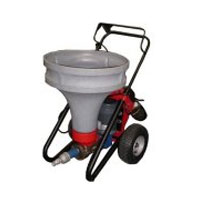 |
|
Pricing$5666.99Call to Order |
"Dear Rick,
I want to thank you and Tony H. so much for the way the two of you and Perma-Chink have handled the problems I've had with the chinking of my home in East Texas. Although there was some bubbling in the areas most exposed to the sun, there were also problems related to the thinner than recommended installation.
Notwithstanding the blame you and Perma-Chink could have laid on the installer, you chose instead to see to it that it was repaired properly. This says volumes about the integrity and compassion of you and Perma-Chink toward the satisfaction of their customers. It also says that you stand by your product 100%.
Please use me as a reference at any time regarding the character of Perma-Chink's management and the company's desire to completely satisfy it's customers. Thank you again."
R. Miller in TX
"Hi Joanne and crew!
We want to thank you for hosting us Saturday and putting on such a professional, informative program!
My wife and I have both been involved in numerous seminars over the years - banking, coaching, city government. You can imagin how tentative we have become about going to someone else's office for training. Your presentation was such a fresh and interesting time that we were really disappointed that we had to leave!
We are hoping to retire (soon) and get to our dream property near Orofino ID. Of course, we plan to do as much as possible the entire cleaning, staining and sealing program on our cabin. We will be in further touch with you.
Again, thank you very much for a great time!"
Bob T. in ID
"Dear Joanne and Staff,
Thank you for the very informative seminar 4/16. It was beautifully set up, professional, thought out and generous. I learned a lot. I appreciated the goodies and hands on demonstratons. The samples are very helpful for home decision making.
You all showed your knowledge and willingness to help clearly.
Good job!'
Kathryn B. in ID
New Age Blast Media Available Sizes
Call 1-800-548-3554 to Order
Features
- Made from recycled glass
- Superior to corn, walnut, sand or soda media

